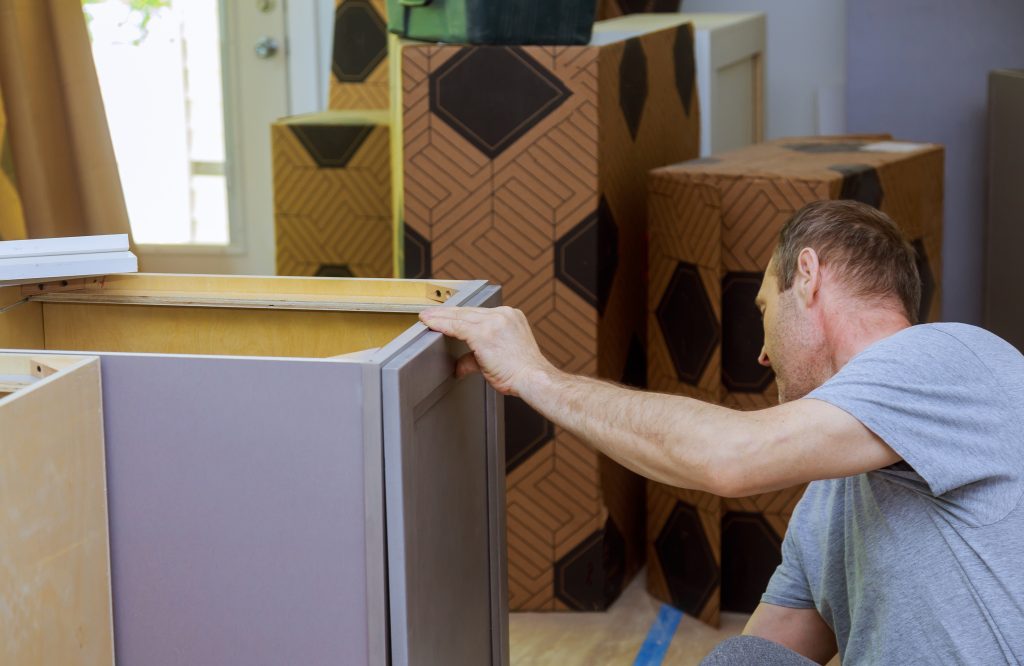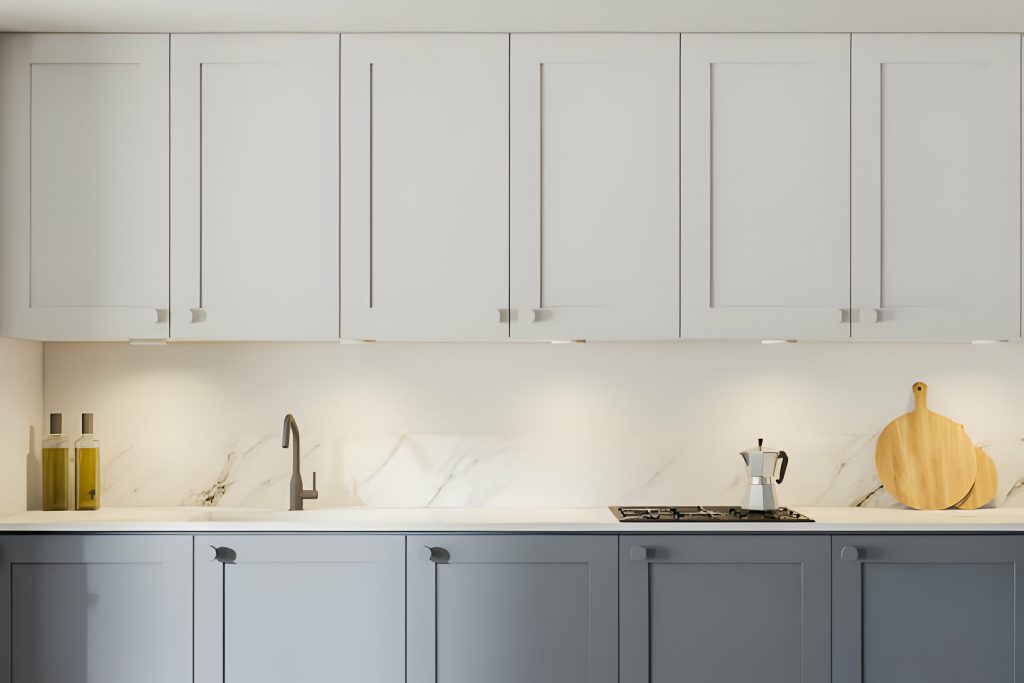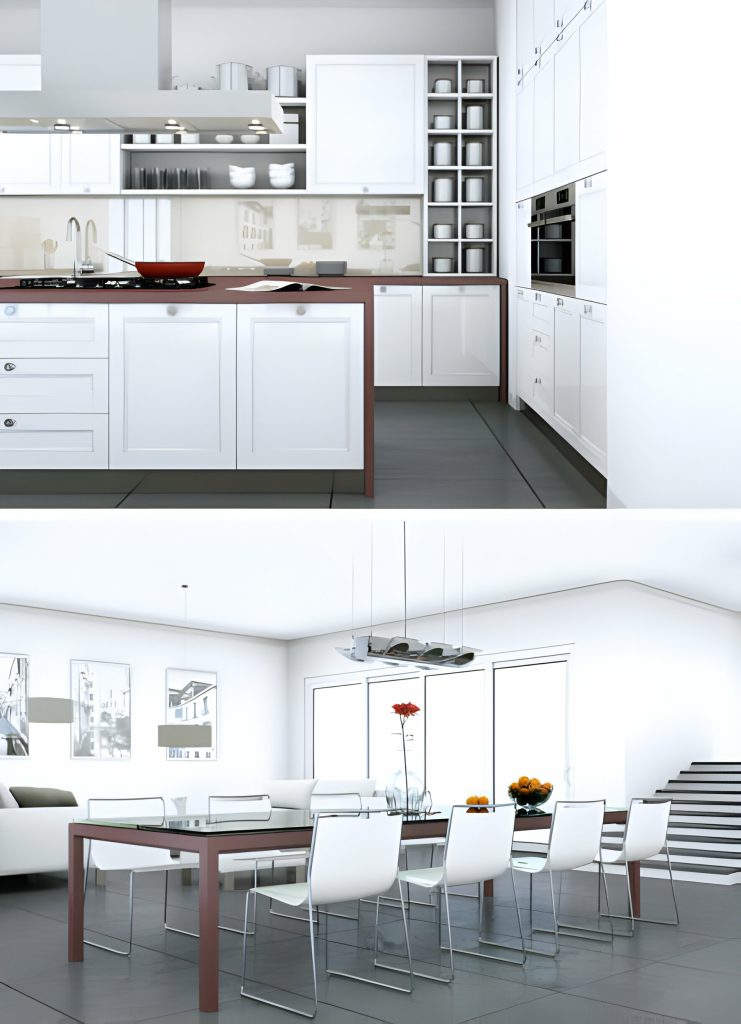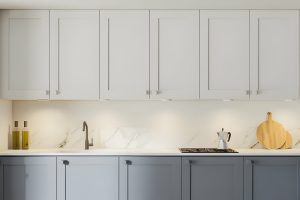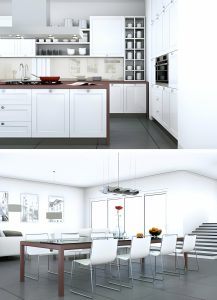When it comes to cabinet doors, there are so many options to choose from. However, understanding the two basic types of cabinet doors is essential in making the right decision for your space. So, what are these two types? Well, let’s just say that they can greatly impact the overall style and functionality of your cabinets. Intrigued? Keep reading to uncover the key differences between these two types of cabinet doors and discover which one suits your needs best.
Frameless Vs. Face Frame Cabinets
When choosing cabinets for your kitchen or bathroom, it is crucial to understand the difference between frameless and face frame cabinets. Frameless cabinets, also known as European style cabinets, do not have a distinctive framework and consist of panels that make up the top, bottom, and sides of the cabinet. On the other hand, face frame cabinets have a framework surrounding the cabinet and drawer openings, with a mid-rail separating the drawer opening from the cabinet opening.
There are several pros and cons to consider when deciding between frameless and face frame cabinets. Frameless cabinets provide a sleek and modern look, while face frame cabinets are suitable for traditional or classic design styles. In terms of hardware selection, frameless cabinets often require special hinges and drawer slides due to their construction differences. Face frame cabinets, on the other hand, offer more flexibility in terms of hardware options.
In terms of visual impact, frameless cabinets provide a clean and seamless appearance, while face frame cabinets can add a touch of elegance with the visible framework.
Ultimately, the choice between frameless and face frame cabinets will depend on your design preferences, hardware selection, and construction considerations. Consulting a professional can help you make an informed decision based on your specific needs and preferences.
Identifying Cabinet Type
To accurately identify the type of cabinet you have, look for distinguishing features such as a surrounding framework or distinctive panels. Here are three key points to consider when determining your cabinet type:
- Look for a surrounding framework: Face frame cabinets have a framework surrounding the cabinet and drawer openings. This framework is usually 1 1/2′ in width and 3/4′ in thickness. It separates the drawer opening from the cabinet opening, giving it a distinct look. On the other hand, frameless cabinets do not have a distinctive framework. Instead, they consist of panels comprising the top, bottom, and sides of the cabinet.
- Examine the panels: Frameless cabinets have panels that make up the entire structure of the cabinet, while face frame cabinets have panels that are separated by a mid-rail. These panels can be a helpful indicator of the cabinet type.
- Consider consulting a professional: If you are still unsure about the type of cabinet you have, it may be beneficial to seek a professional consultation. They can provide expert advice and help you determine the exact cabinet type.
Identifying your cabinet type is important for various reasons, including cabinet hardware selection, determining the appropriate cabinet accessories, and making informed decisions when it comes to cabinet door selection. By understanding the distinguishing features and seeking professional guidance if needed, you can ensure that your cabinet hardware and accessories are compatible with your specific cabinet type.
Importance of Knowing Cabinet Type
Knowing the type of cabinet you have is crucial for making informed decisions when it comes to cabinet hardware selection, ensuring compatibility with cabinet accessories, and achieving the desired aesthetic for your kitchen or bathroom. The type of cabinet you have will determine the type of hardware that can be installed. For example, face frame cabinets typically require hinges that are designed to be mounted on the face frame, while frameless cabinets require hinges that can be mounted directly on the cabinet side panels. Additionally, different types of cabinets may have different requirements for cabinet door accessories such as knobs or pulls. It is important to know the type of cabinet you have in order to select the appropriate accessories that will fit and function properly. Consulting a professional is recommended if you are unsure about the type of cabinet you have or if you need assistance with cabinet door installation. They can provide guidance and expertise to ensure that the installation is done correctly and efficiently. Furthermore, knowing the type of cabinet you have is also important when selecting drawer slides. Different types of cabinets may require specific types of drawer slide guides, and choosing the wrong type can result in poor functionality or even damage to the cabinet. By knowing the type of cabinet you have, you can select the appropriate hardware, accessories, and drawer slide guides to ensure a successful and functional cabinet installation.
Types of Cabinet Doors
There are several different types of cabinet doors available, each offering a unique look and functionality for your kitchen or bathroom cabinets. When choosing cabinet doors, it is important to consider the various styles, customization options, popular trends, cost considerations, and functionality features. Here are three types of cabinet doors to consider:
- Full Overlay Cabinet Doors: These doors almost completely cover the cabinet frame, leaving only a small gap between adjacent doors or drawers. They can be used on both frameless and face frame cabinets, providing a seamless and modern look.
- Partial Overlay Cabinet Doors: These doors only partially cover the cabinet face frame, leaving large gaps between doors, drawers, and the cabinet edge. This style creates a more traditional look and allows for a back bevel on doors for easy opening. It can be used with or without hardware.
- Inset Cabinet Doors: These doors fit within the frame of the cabinet, similar to front doors. They require special hinges and stops to prevent inward swinging. Inset doors provide a clean and classy appearance with an even reveal on all sides, but they can be more difficult to install compared to other door types.
Consider these different cabinet door styles and their features to find the perfect option for your kitchen or bathroom cabinets.
Frameless Cabinetry
When considering different types of cabinet doors, one option to explore is frameless cabinetry, which offers a contemporary look with clean lines and simplified designs. Frameless cabinets, also known as European cabinets, have no frame and wider doors. They provide a sleek and modern look that is popular in today’s kitchen design trends. Here is a table to highlight the pros and cons, installation tips, design options, cost considerations, and maintenance tips for frameless cabinetry:
| Pros | Cons | Installation Tips | Design Options |
|---|---|---|---|
| – Contemporary look | – Requires precise installation | – Use sturdy wall supports | – Textured laminate styles |
| – Clean lines | – May be more expensive | – Ensure level and plumb | – High-gloss slabdoor styles |
| – Simplified designs | – Limited availability of hardware | – Hire professional if unsure | – Shaker, slab, decorative, and raised panel styles |
| Cost Considerations | Maintenance Tips |
|---|---|
| – Frameless cabinets may be more expensive due to the materials used and the precision required for installation. | – Regular cleaning with a mild soap and water solution is recommended. |
| – Additional labor may be needed for installation. | – Avoid using abrasive cleaners or scouring pads that can damage the surfaces. |
| – The cost of hardware may be higher due to the limited availability of options. | – Check and tighten any loose screws or hinges regularly. |
| – Customization options, such as textured laminates or high-gloss finishes, may increase the cost. | – Address any water or moisture issues promptly to prevent damage. |
Frameless cabinetry offers a sleek and modern design option for those looking for a contemporary look in their kitchen or bathroom. While it may require precise installation and potentially be more expensive, the clean lines and simplified designs make it a popular choice. With proper maintenance and care, frameless cabinets can provide a stylish and functional addition to any space.
Full-Overlay Cabinetry
Full-Overlay cabinetry is a style of cabinet doors and drawer fronts that completely cover the cabinet face, resulting in a seamless and modern look. This type of cabinetry has several advantages and disadvantages that you should consider before making a decision for your kitchen or bathroom.
Advantages:
- Seamless and modern look: Full-Overlay cabinetry provides a clean and sleek appearance, without any visible gaps between doors or drawers. This creates a seamless and modern aesthetic that is highly desired in contemporary designs.
- Increased storage space: Since the doors and drawer fronts cover the entire cabinet face, there is no wasted space between cabinets. This allows for maximum storage capacity, making it easier to organize and store your kitchen or bathroom essentials.
- Versatile design options: Full-Overlay cabinetry can be used with both frameless and face frame cabinets, offering flexibility in design choices. This allows you to achieve the desired style and functionality for your space.
Disadvantages:
- Higher cost: Full-Overlay cabinetry requires larger doors and more material, which can increase the cost of cabinet manufacturing. This may be a disadvantage for those on a tight budget.
- Limited frame visibility: While the seamless look of Full-Overlay cabinetry is visually appealing, it may not be suitable for those who prefer the traditional look of a visible cabinet frame.
- Limited hardware options: The full coverage of the doors and drawer fronts in Full-Overlay cabinetry leaves less room for hardware placement. This may limit your options for decorative or functional hardware choices.
Partial Overlay Cabinetry
Partial Overlay cabinetry is a type of cabinet design where the doors only partially cover the cabinet face frame, leaving large gaps and exposing a portion of the frame between doors. This style of cabinet doors, also known as standard overlay doors, is often used to cut manufacturing costs. While it may not provide a seamless and modern look like full overlay doors, partial overlay doors have their own benefits.
One of the main advantages of partial overlay doors is that they create a more traditional look. The larger gaps between the doors, drawers, and cabinet edge give a classic and timeless appearance to the cabinets. Additionally, the exposed portion of the frame between doors allows for a back bevel on the doors, making it easier to open them.
When it comes to cost considerations, partial overlay doors are a budget-friendly option. The design uses less material compared to full overlay doors, resulting in lower manufacturing costs. This makes partial overlay cabinetry a popular choice for low-end, new construction projects.
Choosing hardware for partial overlay doors is an important consideration. Since the doors only partially cover the frame, the hardware needs to be selected carefully to ensure proper functionality and aesthetics. It is recommended to choose hardware that complements the traditional look of the partial overlay doors and enhances the overall design of the cabinets.
Inset Cabinetry
Inset cabinetry is a classic and timeless style of cabinet design where the doors and drawer fronts sit inside the cabinet face frame openings, creating a flush and seamless appearance. This style is closely associated with Shaker, Craftsman, and Mission styles. Here are some key points to consider about inset cabinetry:
- Pros and cons:
- Pros: Inset doors offer a clean and classy appearance with an even reveal on all sides, creating a sense of craftsmanship and attention to detail. They can enhance the overall aesthetic of traditional and classic kitchen designs.
- Cons: Inset cabinet doors require precise craftsmanship to fit inside the face frame, making them more difficult to install compared to other door types. They also typically use different hinges (revealed or concealed) than overlay styles. Additionally, inset door styles are generally more expensive than overlay styles due to the extra craftsmanship required.
- Installation process: Inset doors fit within the frame of the cabinet and open and close similar to front doors. The installation process involves precise measurements and adjustments to ensure a perfect fit. Special hinges and stops are used to prevent inward swinging.
- Popular styles: Inset cabinetry is commonly seen in Shaker, Craftsman, and Mission styles. These styles feature simple, clean lines and a focus on functionality.
When considering inset cabinetry, it is important to weigh the pros and cons, understand the installation process, consider popular styles, and compare the cost to other door types. Taking these design considerations into account will help you make an informed decision for your kitchen or bathroom cabinets.
